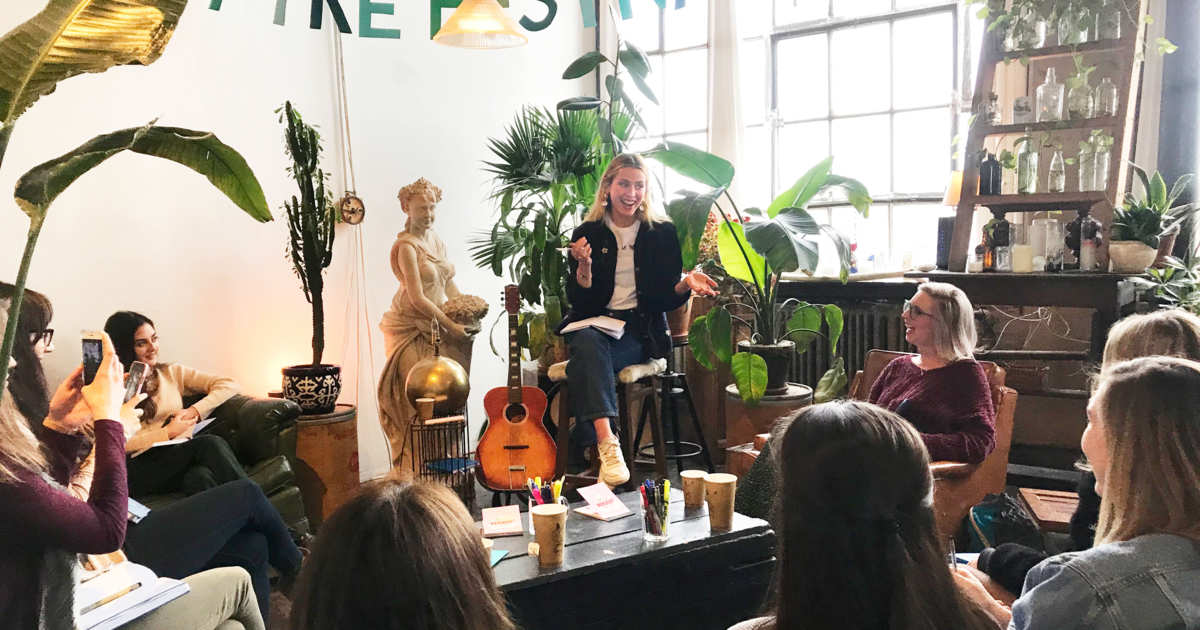“Creative” is a fixture of the self-help industry,
“創(chuàng)意”是自助行業(yè)的固定模式,
touted as a secret to success and a key to enlightenment on podcasts and websites
并在播客上,網(wǎng)站上,以及《創(chuàng)造性信心:釋放我們所有人的創(chuàng)造性潛能》這樣的書中
and in books like “Creative Confidence: Unleashing the Creative Potential Within Us All.”
反復(fù)被吹捧為成功的秘訣和開悟的關(guān)鍵。
And in recent years, creative has made a grammatical migration, crossing over from adjective to noun.
近年來,“creative”這個(gè)詞已經(jīng)經(jīng)過了語法上的遷移,從形容詞變成了名詞。
A creative is a kind of worker, or rather many kinds of workers —
指的是某種工作者,或者更確切地說,是各種各樣的工作者——
a catchall that takes in web coders, graphic designers, copywriters, actors, painters, D.J.s, cocktail mixologists, Instagram influencers
這是一個(gè)包羅萬象的總稱,包括網(wǎng)絡(luò)程序員,平面設(shè)計(jì)師,文案,演員,畫家,DJ,雞尾酒調(diào)酒師,Ins名人,
and all the rest of the culture-and-information-industry professionals that the sociologist Richard Florida famously called “the creative class.”
以及其他文化信息行業(yè)的,被社會(huì)學(xué)家理查德·弗羅里達(dá)稱之為“創(chuàng)意階層”的所有專業(yè)人士。
Creative is not just an attribute. It is an identity.
“創(chuàng)意人士”不僅僅是一種屬性。還是一種身份。
“Creative” can be traced to the Latin creare, meaning to beget or to bring forth.
“Creative”這個(gè)詞的詞源可以追溯到拉丁語里的“creare”一詞,意思是“產(chǎn)生”或“使產(chǎn)生”。
In philosophical classical Latin, the verb was sometimes used in reference to the ultimate creative act, divine creation.
在充滿哲學(xué)的古典拉丁語中,這個(gè)動(dòng)詞有時(shí)指的是終極創(chuàng)造行為或者神圣的創(chuàng)造。
The English adjective “creative” dates to the 17th century;
英語里作形容詞的“creative”一詞可以追溯到17世紀(jì);
it was likely during the Enlightenment that it gained wide use as a descriptor for human endeavors, often artistic or literary, that have qualities of originality and excellence.
很可能就是在啟蒙運(yùn)動(dòng)期間,作為形容具有獨(dú)創(chuàng)性和卓越品質(zhì)的人類活動(dòng),通常指藝術(shù)或文學(xué)活動(dòng),的詞得到了廣泛的運(yùn)用。
Today, in any case, we deploy the term far more promiscuously.
今天,我們對(duì)這個(gè)詞的使用,無論是用在什么情況下,都要混亂得多。

A label once reserved for the grandest artistic undertakings and the most exalted creators,
一個(gè)過去專門用來形容最偉大的藝術(shù)事業(yè)和最崇高的創(chuàng)造者,
from God to da Vinci to the mother who birthed you,
即上帝,達(dá)芬奇以及給你生命的母親之輩的標(biāo)簽,
is now applied willy-nilly to such activities as scrapbooking and bicycle-frame building,
如今卻被人們隨意地貼到了美編、自行車框架組裝之類的活動(dòng),
to the person who pulled your morning latte or designed the logo for your calorie-counting app.
以及早上給你打拿鐵或者為你的卡路里計(jì)算軟件設(shè)計(jì)商標(biāo)的人身上。
This democratization can feel absurd, but it strikes at a deep truth.
這種民主化或許會(huì)讓人覺得頗為荒謬,但它也觸及了一個(gè)深刻的真理。
Humans derive meaning and pleasure from making stuff.
人類會(huì)從制造物品的過程中尋找意義和樂趣。
To engage in even the smallest acts of creation — molding a clay bowl in our hands or shaping an idea in our minds — is to perform a conjuring trick,
從事哪怕是最微不足道的創(chuàng)造行為——比如手工制作一個(gè)陶碗或者在腦海里構(gòu)思一個(gè)想法——都相當(dāng)于在表演一場(chǎng)魔術(shù),
to experience the mysterious and sublime power of bringing a new thing into existence.
相當(dāng)于在體驗(yàn)將新事物帶入現(xiàn)實(shí)那種神秘而崇高的力量。
There was a time, not long ago, when the pursuit of that kind of satisfaction was considered morally dubious.
不久以前,追求那種滿足感還會(huì)受到道德上的質(zhì)疑。
Historically, bourgeois society regarded artists as disreputable and deviant, eccentrics doomed to the social margins.
在歷史上,資產(chǎn)階級(jí)都視藝術(shù)家為聲名狼藉、離經(jīng)叛道、注定要被社會(huì)邊緣化的怪人。
Our 21st-century cult of the creative reflects a shift in this attitude.
我們21世紀(jì)的人對(duì)創(chuàng)造性的崇拜反映這種態(tài)度已經(jīng)發(fā)生了轉(zhuǎn)變。
Today, many haute-bourgeois people cultivate personas as artists and bohemians — even when they are marketing executives.
如今,很多高級(jí)資產(chǎn)階級(jí)人士都會(huì)塑造自己藝術(shù)家和波西米亞式放蕩不羈的一面——就算身為營(yíng)銷主管的人也不例外。
This change reflects a broader transformation of the economy:
這種變化反映了整個(gè)經(jīng)濟(jì)發(fā)生的更廣泛的轉(zhuǎn)型:
the information-technology revolution and the reorientation of cities from manufacturing hubs to centers of knowledge work and cultural production.
信息技術(shù)發(fā)生的革命以及城市從制造業(yè)中心轉(zhuǎn)向腦力工作和文化生產(chǎn)中心的重新定位。
譯文由可可原創(chuàng),僅供學(xué)習(xí)交流使用,未經(jīng)許可請(qǐng)勿轉(zhuǎn)載。



